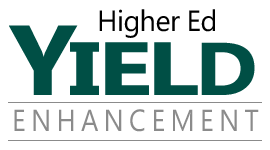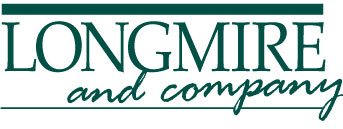Yield is simply a metric that in any other industry would be called a close ratio. If you’re a sales manager in any other industry and your close ratio isn’t where you want it be, you examine the effectiveness of your strategies and execution in both marketing and selling.
Why should it be any different for higher education?
 In business-to-business or business-to-consumer marketing and sales the goal is always to understand the needs and preferences of the prospect and present the value of your product or service in the context what that consumer perceives as being valuable.
In business-to-business or business-to-consumer marketing and sales the goal is always to understand the needs and preferences of the prospect and present the value of your product or service in the context what that consumer perceives as being valuable.
Why should it be any different for higher education?
Let’s stipulate that higher education is different in so many ways from other industries that sell products and services to consumers. With that stipulation, let’s also recognize that 4-year non-profit public and private colleges and universities continue to exist only when their income exceeds their expenses.
Marketing serves to generate interest among prospective students but it can only go so far in converting interest into enrollment. At some point the sale needs to be made. In higher education, that most often happens when a prospective student interacts with an admission counselor, a faculty member, a financial aid representative, a coach, a campus, a current student or even another prospective student.
It is these human interactions that have the largest impact on yield. And in so many colleges and universities across the United States, this is the area that is most often overlooked.
Rather than focusing on all things that can be done to improve the interaction with prospective students and families during the college shopping process, so many colleges default to increasing the size of their prospect and applicant pools with the hope that an estimated increase in enrollment will justify the substantial cost of generating and processing an admittedly softer pool.
The sad truth for many colleges employing this strategy is that they find themselves working even harder to process a larger pool of students with the same systems and personnel they’ve used in the past. That just puts additional pressure on an already pressured process.
The solution is to focus first on what’s happening at ground level. How rich is your interaction with students in your naturally occurring pool? Are you providing great pre-enrollment customer service? Are your counselors well-trained to have the types of conversations that will generate excitement among prospective students about coming to your institution? Are prospective students having the types of campus visit experiences that will get them excited about your institution over all others?
These are the essential practices that, when executed properly, ensure the highest yield from your pool of prospective students. Attempting to fit any new yield initiative on top of a malfunctioning base is a waste of time and resources.
In this new blog series, we will provide information and examples of strategies and tools that can be used by any college that wishes to increase its yield efficiency using the resources that are currently available to them. Stay tuned.
 Bob Longmire is President of Longmire and Company, Inc. He is a recognized expert on the topic of how prospective students and parents form their college selection decisions – and how colleges can use that knowledge to grow and control their enrollment.He can be reached at (913) 492-1265, ext 709 or at blongmire@longmire-co.com.
Bob Longmire is President of Longmire and Company, Inc. He is a recognized expert on the topic of how prospective students and parents form their college selection decisions – and how colleges can use that knowledge to grow and control their enrollment.He can be reached at (913) 492-1265, ext 709 or at blongmire@longmire-co.com.

